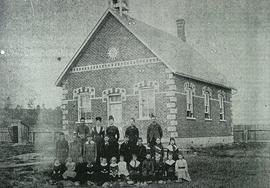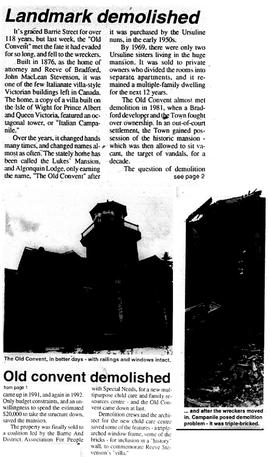Description : On the north side of the 7th Line, about 1 km. west of Bond Head, there is a metre-high cairn in the fence line, that marks the location of the home and church built by the Rev. Featherstone Osler in the late 1830s. The frame church, that would become Trinity Anglican Church in Bond Head, was initially planned a lecture base for divinity students, church school, and centre for baptisms and marriages. It was during this time, that four sons were born to the Oslers - Feathersone, Britton, Edmund and William. The two elder sons became lawyers of note, Edmund a banker, and William, a doctor who was knighted for his service to his fellow man, and whose work changed the nature of medical practice and diagnosis. A number of medical facilities in Ontario have been named in honour of Sir William Osler, and at Trinity Anglican Church today, a memorial window and brass plaque are of great interest to the members of the medical profession who come from all over the world to visit the birthplace of this leader of their chosen profession. The Osler timber-frame country church, with its stucco coating, was moved in September of 1885 from the 7th Line to the top of the hill, at the northwest corner of Bond Head. It was rollered down the rural road in sections, reassembled, then given a veneer of brick and a new steeple. New oak pews were installed, and the interior was trimmed in oak. Much of the original interior and exterior still survive, including items used by Rev. Osler himself. On December 20th, 1885, Rev. Osler travelled from his Dundas charge to officially open the renovated church in its new location. Recently, Dr. Watters, a local resident and retired surgeon, speaking to the Bradford West Gwillimbury Local History Association, stated, "The old Osler church built and preached in by the Reverend Featherstone Osler, home to his astonishing family, is a piece of Canadian history of interest around the world. We must find some way to preserve the Osler church as part of that character, and as a reminder of the kind of people who began it."





